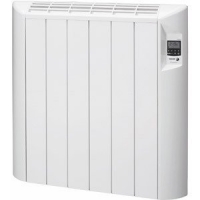Types of electric heaters
There are 4 types of electric heating: convectors, radiant heaters, soft heat radiators, inertia radiators.
1. The convectors
Its operation is very simple. The cold air arrives from the bottom of the device, is heated by contact with an electric resistance, then comes out from the top. They are economical to buy.
2. The radiant
For radiant heaters, it is a resistance plate that will transmit heat through a steel facade. The heat will be better distributed in the room and softer.
3. Soft heat radiators
These radiators work thanks to two independent heat sources. The first is a resistance that is located on the surface of the device. This heat will be noticeable immediately, which allows a room to be heated quickly. The second is a complementary soft energy that comes from a second resistance at the rear. This is generally stored in the device in order to be diffused in a gentle and continuous manner. These types of radiators therefore allow the diffusion of a gentle and permanent heat.
4. Inertia radiators
Inertia heaters continue to radiate heat even when turned off. The heat diffused by these radiators is comparable to that with a central heating. A distinction is made between heat transfer fluid devices (the resistance is immersed in a heat transfer fluid allowing optimal heat diffusion) and those with dry resistance (the heat is obtained by the increase in heat of the resistance).
The power of the devices
To choose the power adapted to the room you want to heat, there are 3 criteria to take into account: the insulation of the room, its volume and the climate where the house is located. If we take the example of a properly insulated house located in an area with an average climate, it will take about 100 W per m².
A different device depending on the room
- Dining room: prefer to use a radiator with gentle heat.
- Kitchen and bathroom: radiating and blowing for the bathroom.
- Bedroom: radiant.

